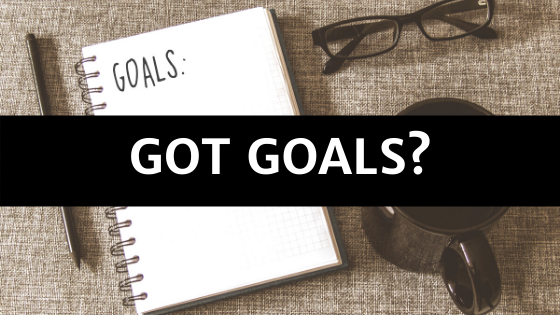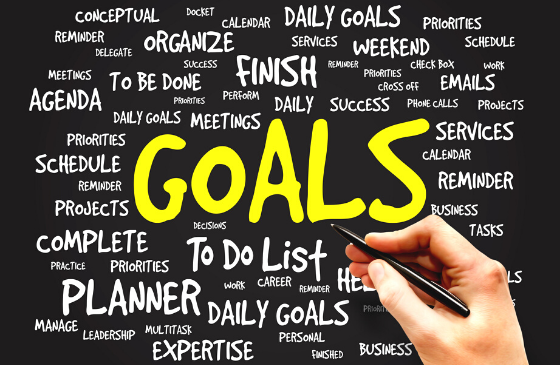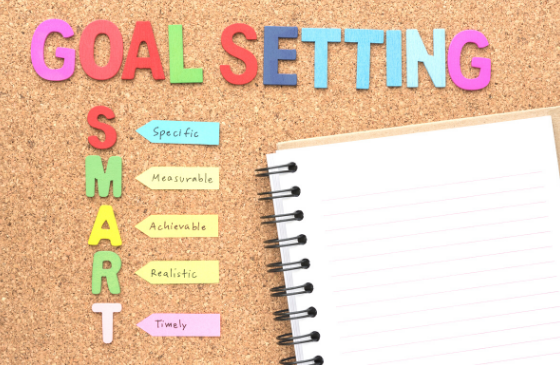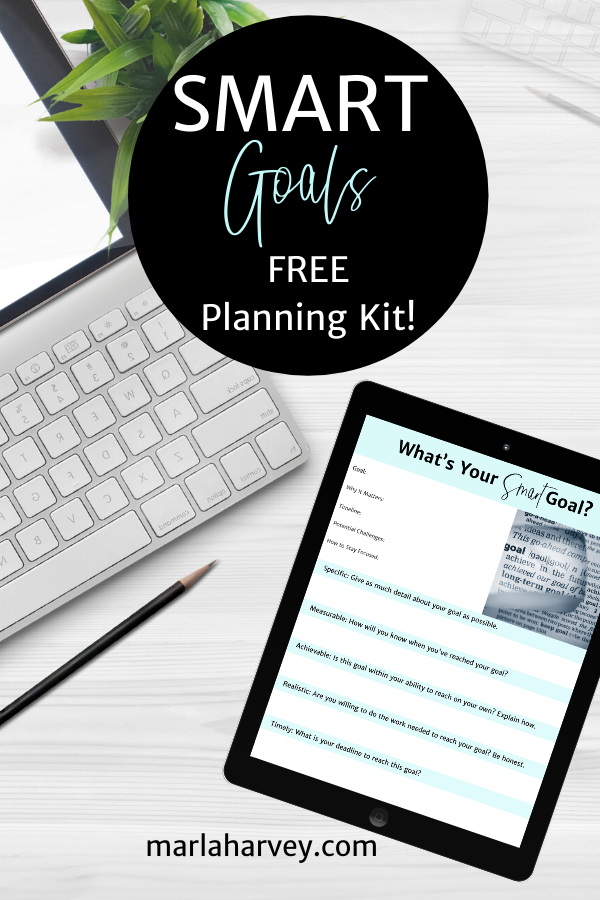
It’s February 2020!
Can you believe we are already one month into this new decade??? I don’t know about you, but I love to start a new year by setting goals to make the year better than the one before. And this year it’s been even bigger because it’s a new decade, and I have 10 years to plan for!
I want to share with you what I’ve learned about goal setting over these 20+ years, and how creating SMART goals can be as much of a game changer for your life as it’s been for mine.

What’s a Goal?
Here’s the Webster definition in my words: a goal is an objective or a desired outcome attained through effort. Goals help provide direction and focus, and setting goals for your life can help provide a foundation to build a successful life.
Why Set Goals?
You need to know where you’re going in order to get there, and a goal does just that – it provides the roadmap, or gps navigation, to help you reach your destination. Like a gps, a goal can help stay on track and not get lost or go in the wrong direction. If there’s anything you’d like to achieve – get a new job, lose weight, learn a new language – setting a goal will help you achieve it, and I’m going to give you a strategy to help you get there.

Using a SMART Goal Strategy
As I learned more about goal setting. I fell in love with the idea of making SMART goals. A SMART goal is one that fits into these five criteria: it is Specific, Measurable, Achievable, Realistic, and Time Sensitive.
In my former career working in the political arena, smart goals were a crucial part of any winning campaign plan. I’ve also used smart goal setting in preparing for events and concerts at church, to successfully raise money to fund my first album, and I’ve also used them in my efforts to lose weight and get healthier. I’m going to walk you through an example of how to set a SMART goal to exercise more (I am a health coach, after all) but these tools can be used for any goal you’d like to achieve – I am currently using this strategy to write a book!

What exactly is a SMART Goal? Let’s break it down:
S = Specific.
The goal has to be clear and answer the question “What do you want to do?”. For example, if my goal is to exercise more, how will I know if I have reached that goal? If, on the other hand, my goal is to exercise 30 minutes a day, 4 days a week, I now have a way to gauge whether I have reached that goal.
M = Measurable.
You need to have some sort of measurement to know that you’ve reached your goal. Let’s look at the example above – you can see the difference between the goal of exercising more and exercising 4 days a week for 30 minutes. I can track my progress every week to see if I am reaching that specific goal.
A = Attainable or achievable.
Is exercising 4 days a week for half an hour an attainable goal? Some questions to consider whether the goal is attainable might be:
- Is there anything in my life that would prohibit me from reaching this goal?
- Do I have time commitments or physical or health limitations that would limit my ability to reach my goal?
- Are there other considerations that might stop me from achieving my goal?
- Is this goal too easy? If it is, can I push it to 5 days? Can I do 45 minutes?
Upping the goal might make it unattainable, but these are great questions to ask yourself when considering your goal because it should be difficult enough to challenge you, but likely to reach with some effort. And don’t forget, setting the goal means that you are working towards it, not that you will achieve it perfectly once you start.
R = Realistic.
Is this goal realistic for my life? In other words, am I willing to do the work to reach the goal? If I set a goal to exercise 4 days a week for 30 minutes, how likely given my life will I be able to follow through in the actions to reach the goal? What am I willing to do to make this happen – will I give up a half hour of sleep so I have enough time to fit it in, give up an hour of tv time to make it to the gym, etc.
This might require looking at my calendar and scheduling out 30 minutes four days every week and determining if I can do this given the time and other commitments in my life. Maybe I haven’t exercised in 5 years, and I need to start at 2 days a week for 10 minutes and work up to this goal.
Ensuring the goal is realistic is an important consideration and where many people get stuck. They can check all the boxes – the goal is specific, it’s measurable, it’s achievable, it has an end date (that’s next), but they are not willing to do the work to reach the goal, which makes the goal unrealistic. Do yourself a huge favor here and be honest about what you’re willing to do, it will save you a lot of frustration and disappointment that comes from setting an unrealistic goal and not being able to achieve it.
T = Time Sensitive.
Does this goal have an end date? If I said I want to work out 4 times a week for 30 minutes and I don’t give myself a date to reach this goal, it could take a year, ten years, or even forever. On the other hand, if I give myself 3 months to reach this goal then I’ve made a goal that I can work towards and build smaller goals into this timeline to ensure I am on track for reaching the goal. Give yourself time, and celebrate those small victories along the way!
There you have it, a simple way to make your own SMART goals! I even made a goal setting planning kit you can download here.
You’ll be setting (and getting) your goals in no time!!!
Want help? Maybe you need a coach to help you get started on reaching your goals – let’s talk! You can schedule a free discovery session with me to see if coaching is right for you.
S: What am I going to do (be clear about it)
M: How will I know I’ve reached it (measure it)
A: Is it within my ability to reach this goal (is it attainable)
R: Am I willing to do the necessary work to reach this goal (realistic)
T: When can I expect to reach my goal (time sensitive)


I love your clear post about goal setting. It’s easy to understand and your tips are very practical which makes the whole experience of setting goals very bearable. Thank you
Thanks so much! I’m glad you found this valuable!
Great post on SMART goal setting. I like to add -ER at the end of SMART to reward myself and evaluate my progress for extra motivation! 🙂
I love that!